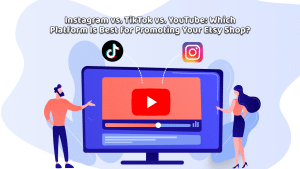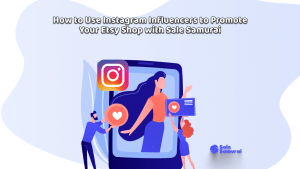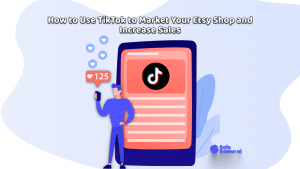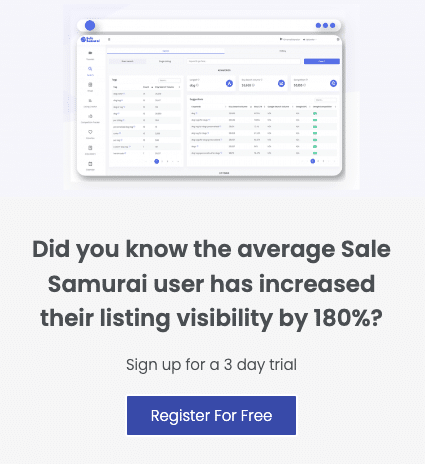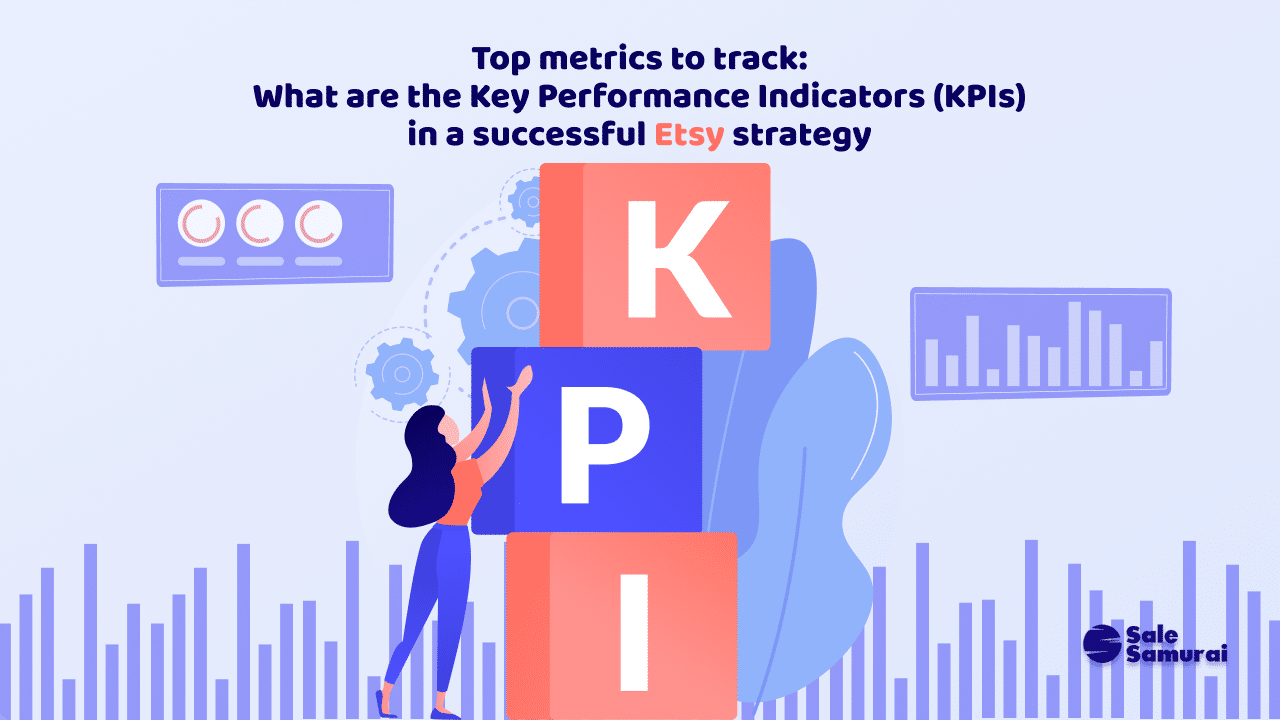
Are you an Etsy seller eager to boost your shop’s performance but unsure where to start?
Although your achievements on the platform depend on many things, your success ultimately comes down to metrics.
In the following sections, we share and explore essential KPIs that every seller needs to monitor. Most importantly, we offer valuable strategies that can be employed to bolster your sales on Etsy.
The metrics you need to know about
Maintaining an Etsy shop without insights into some of the vital performance metrics is like entering a maze blindfolded.
These indicators are crucial for understanding your shop’s current standing and for planning growth strategies.
So let’s dive in and examine the top metrics that reflect your Etsy shop’s performance.
Sales volume
Sales volume refers to the total number of products you sell over a specific period. It’s a straightforward, yet crucial piece of data that allows you to gauge your shop’s overall accomplishments.
A high sales volume indicates that products resonate with your target audience and that you’re successfully drawing in buyers. A low sales volume, on the other hand, signals a need to reassess various aspects of your business – from the appeal of your product line to your marketing strategies.
Sales volume can also highlight certain trends over time. For instance, it can help identify busy shopping periods or show when certain products sell best. This can guide sellers in creating promotional activities or optimizing some product listings for sale more actively than others.
Conversion rate

A shop’s conversion rate is the percentage of visitors who complete a purchase. To calculate this metric, divide the number of sales by the number of visitors and multiply the result by 100.
Conversion rate is a powerful indicator as it offers insight into the effectiveness of your listings and your shop as a whole. A high conversion rate demonstrates that you’re not only attracting the right audience but also persuading them to buy.
On the other hand, a low conversion rate suggests that even though your listings are receiving traffic, consumers aren’t being convinced to make a purchase. This may be due to multiple factors, like unattractive product images, poor product descriptions, inadequate prices, or negative reviews.
Customer reviews and ratings

On Etsy, customers can share their feedback for products by rating their purchases on a scale of 1-5 stars or leaving reviews. These reviews and ratings are pivotal for several reasons.
Firstly, they provide social proof. New purchasers often check reviews and ratings before making purchase decisions. If you stand out with a variety of positive client feedback, it’s likely to build confidence in potential shoppers and lead to more sales.
Secondly, customer reviews offer valuable and genuine information about the quality of Etsy products. If there’s an issue with an item or perhaps other parts of your service (like delivery or packaging), you can detect the problem from what buyers have to say.
Receiving a negative comment from an individual can be disappointing. However, it creates an opportunity to address a problem, improve, and demonstrate excellent service.
Revenue
Revenue refers to the total money generated by your Etsy shop from selling products, excluding Etsy’s fees. It’s the lifeblood of your business as your shop won’t be able to survive without it.
Monitoring revenue helps you understand if your listings are profitable and sustainable. It can also inform decisions around pricing, costs, and investments in new products or marketing.
Additionally, like sales volume, trends in revenue can indicate peak shopping periods and the popularity of certain items.
Shop favorites
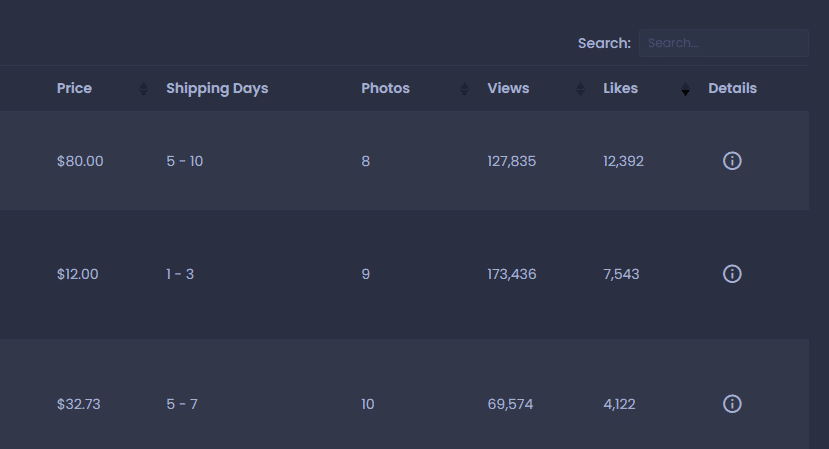
On Etsy, users have the option to favorite a shop or specific products they’re interested in. This action doesn’t immediately translate into a sale, but it’s a significant form of user engagement.
Shop favorites play the role of a bookmark for your shop visitors. They double the likelihood that the user will return to make a purchase. In addition, a high number of favorites can also boost your visibility in Etsy’s search algorithm.
Moreover, if you notice certain items are frequently favorited, it could indicate popular trends or preferred items among your audience. This information can guide product development and can help you shape more effective promotional strategies.
The impact of these metrics on your Etsy sales strategy
Understanding these metrics isn’t just about knowing your numbers. Although having access to this information for reporting is great, it won’t be enough.
It all comes down to knowing how to apply this knowledge to enhance your sales strategy.
Let’s put our insights so far into perspective.
Sales volume and revenue
Inevitably, sales volume and revenue are intertwined. As noted above, they can guide your inventory management and dictate what products should be prioritized.
Imagine that a particular product consistently sells well and generates high revenue. Naturally, it’s a good idea to maintain adequate stock of this product. This ensures that you’re capitalizing on its popularity and not missing out on potential sales.
We also mentioned that these two metrics can highlight seasonal trends. Perhaps you sell more of a particular item during holiday periods, or maybe your sales volume increases in the summer. Understanding these patterns allows you to prepare and ensure that you have sufficient inventory during peak periods.
Finally, by keeping a close eye on revenue, you can ensure your business remains profitable. If you notice a sudden drop in revenue, it might be time to revisit your pricing strategy or explore different avenues to reduce costs.
Conversion rate
The state of your shop’s conversion rate is a direct reflection of how effective your shop is at turning visitors into customers.
There are many shops that successfully attract visitors, yet lack the ability to transform traffic into sales. This metric is the most reliable one when it comes to shedding light on the need to reconsider elements of your product listings.
In the above sections, we pointed out some listing elements, like photos, descriptions, and prices. But a low conversion rate could also be a result of unreliable shipping times, missing product information, or poor choice of materials.
A high conversion rate, on the other hand, may call for a different strategy. It might be best to focus on ways to increase traffic, as you already have a strong foundation for converting visitors into customers.
Customer reviews and ratings
Customer reviews and ratings make or break your shop’s reputation. High ratings and positive reviews can greatly enhance your shop’s credibility, which in turn can attract more users and drive more sales.
If your shop receives a negative review, it’s crucial to respond promptly and professionally. This not only addresses the concerned shopper but also shows potential buyers that you’re committed to customer satisfaction.
On the flip side, consistently positive reviews can be used in your marketing strategy. Showcasing these testimonials on your shop page, social media, or other promotional materials can help create new clients and turn existing shoppers into loyal customers.
Shop favorites
Last but not least, shop favorites reflect interest and engagement.
If certain products are frequently favorited, it could indicate that they’re particularly appealing to your target audience. You might consider creating similar or complementary products, or you could feature these popular items more prominently in your shop or marketing materials.
As we touched upon earlier, favorites also play a role in Etsy’s search algorithm. Products with more favorites are more likely to appear higher up in search results. Thus, increasing your favorites could be a useful strategy to make your items easier to discover and ultimately driving more sales.
Improving Your Etsy Metrics
But how can you take your Etsy metrics to the next level?
Here are some tips:
- Optimize your Etsy SEO to reach more potential buyers. Delivering top-quality products and providing exceptional customer service can lead to repeat purchases and customer referrals. This will ultimately enhance your sales and revenue.
- Make sure your product listings are irresistible and fully optimized. Use high-quality images and don’t forget to include the maximum number of photos per listing (10 images per product). Create detailed descriptions, use tags to your advantage (currently, sellers can include up to 13 tags per listing), and set competitive prices. This will help you boost your conversion rates.
- Keep your buyers satisfied with a diverse product portfolio and unbeatable quality. If you notice that a client is unhappy, get in touch with them and show that their opinion matters. Kindly suggest a solution to turn a negative experience into a positive review.
- Don’t just rely on the platform for success. Promote your Etsy shop on social media and encourage followers who are interested in what you have to offer to favorite your shop. This could significantly increase visibility and conversions.
In a nutshell
By tracking these key metrics and following the strategies mentioned, you’ll be well on your way to a successful and profitable Etsy business.
Remember, running an Etsy shop is a journey, not a race. Continue to learn, adapt, and strive for progress. Perfection will follow as your experience accumulates.
But most importantly, rely on business intelligence tools like Sale Samurai to offer all of the insights and metrics you need to make the right decisions at the right time.
